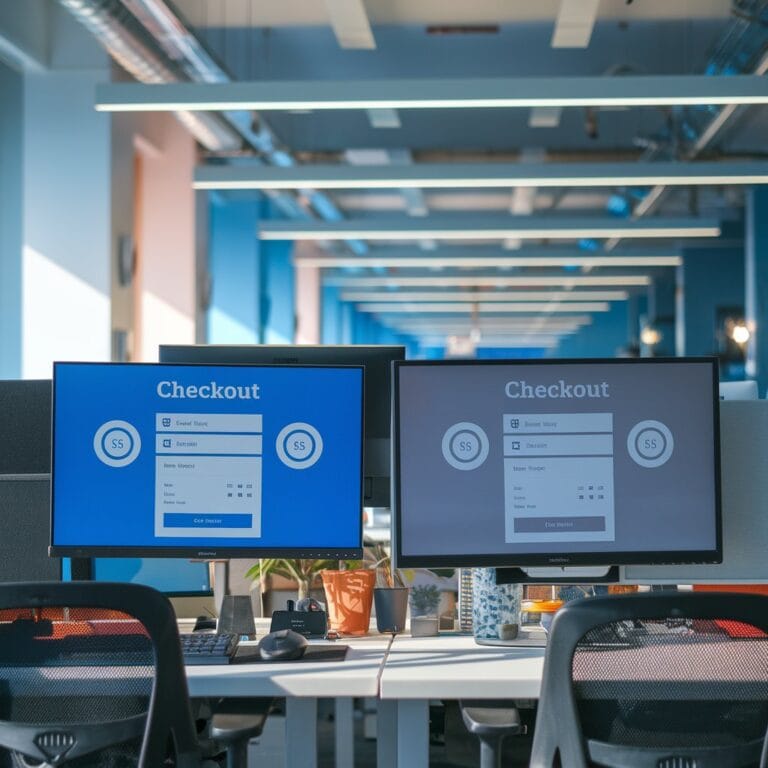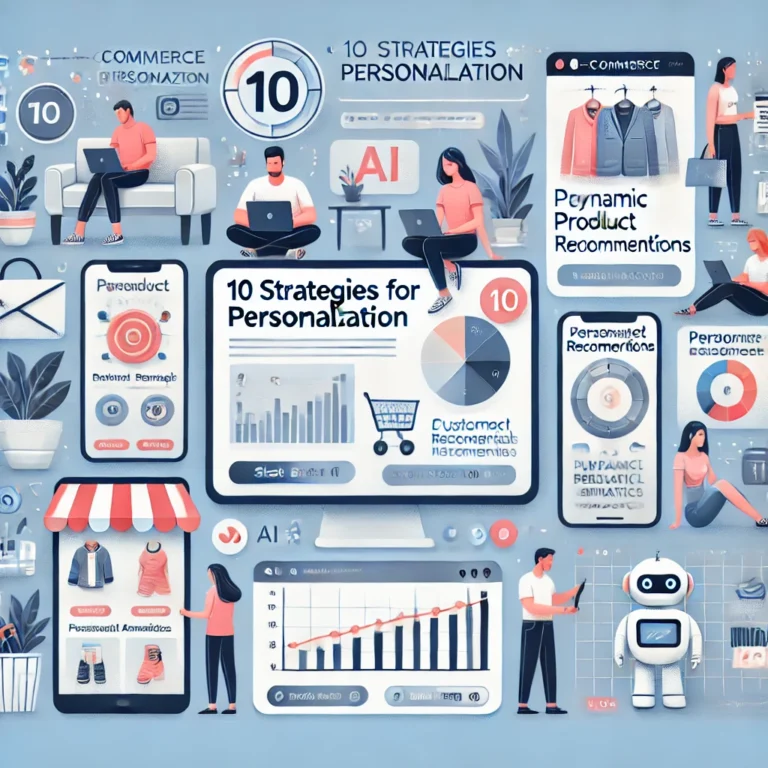In the ever-evolving world of e-commerce, maximising conversions and customer engagement is a constant battle. To achieve this, many businesses grapple with the question of comparing AB testing vs personalisation. Understanding the distinct advantages of each approach, and when to leverage them, is the key to unlocking a personalised shopping experience that drives sales and customer loyalty. This article dives deep into both strategies, equipping you with the knowledge to choose the right champion for your online store.
In the world of e-commerce, every click, every conversion, counts. But with so many variables at play – product pages, checkout flows, email marketing – how do you know what’s working and what’s driving customers away? That’s where two powerful tools come in: A/B testing and personalisation.
Now, I’ve been in e-commerce for a quarter of a century, and I can tell you – these two approaches aren’t rivals, they’re teammates. But they excel in different areas. So, let’s break down the key differences and help you pick the right champion for your online store.
Understanding the Game: A/B Testing vs. Personalisation
Imagine you’re revamping your homepage. You have two stellar ideas: a clean, minimalist design with a hero image, or a busier layout showcasing your top sellers. With A/B testing, you pit these two versions against each other, showing them to a portion of your website traffic. The version that generates more sales, sign-ups, or whatever your goal is, wins.
Personalisation takes a different approach. Here, you leverage customer data – purchase history, browsing behaviour, even location – to tailor the shopping experience. Think of it like having a personal shopper for every visitor. A customer who loves hiking gear might see a banner highlighting your latest walking boots, while someone browsing phone cases gets a pop-up offering screen protectors.
The A/B Testing Advantage: Finding the Overall Winner
A/B testing is fantastic when you want to compare two distinct elements and see which resonates better with your overall audience. Here are some common scenarios where A/B testing shines:
- Headline Showdown: Ever agonized over the perfect product page headline? A/B testing lets you see which one grabs attention and drives clicks.
- Call to Action Champions: Is your “Buy Now” button a bit bland? Test it against a more action-oriented phrase like “Add to Basket and Save!”
- Layout Lab Rats: Unsure if a cluttered or minimalist layout converts better? A/B testing provides the answer, data-driven and clear.
Real-World Example: A/B Testing for Conversions
Let’s say you run a sports clothing store. You suspect your current product page layout, with a large image on the left and description on the right, might be hindering conversions. You create a variation with the description placed above the image. Using A/B testing software, you show both versions to different segments of your website traffic. After a set period, you analyze the results. Perhaps the version with the description above the image leads to a 10% increase in “Add to Basket” clicks. Bingo! You’ve found a clear winner based on hard data.
The Power of Personalisation: Tailoring the Experience
Personalisation goes beyond simple A/B testing. It allows you to create unique experiences for individual customers based on their preferences and behaviour. Here’s how it works in practice:
- Rule-based Personalisation: This is like having a simple set of guidelines. For example, returning customers might see a “Welcome Back” banner with personalised product recommendations based on their past purchases.
- Machine Learning Magic: This takes personalisation to the next level. Advanced algorithms analyze vast amounts of customer data to predict preferences and suggest relevant products, discounts, or content. Imagine a customer browsing for running shoes. Personalisation powered by machine learning might recommend socks, energy gels, or even a training app based on their browsing history and past purchases.
Real-World Example: Personalisation for Customer Engagement
Imagine you run a beauty store. A customer with dry skin browses your cleansers but doesn’t convert. Personalisation kicks in. The customer sees a pop-up offering a free sample of a moisturiser formulated for dry skin types. Intrigued, they add the sample to their basket and complete the purchase. This personalised touch can significantly boost engagement and sales.
Testing, Testing, 1, 2, 3: Ensuring Success with Personalisation
Personalisation sounds magical, but it requires a little elbow grease. Here’s how to test and refine your personalisation strategy:
- Gather Data: The more you know about your customers, the better you can personalise their experience. Start by collecting data on browsing behaviour, purchase history, and demographics (with permission, of course!).
- Segment Your Audience: Divide your customers into groups based on shared characteristics. For example, group fitness enthusiasts, make-up mavens, or budget-conscious shoppers.
- Craft Personalised Experiences: Develop targeted messaging, product recommendations, and promotions for each segment. Fitness enthusiasts might see ads for protein powder and workout gear, while make-up mavens receive personalised recommendations based on their past purchases (think foundation shades or eyeshadow palettes).
- Measure and Refine: Personalisation is an ongoing process. Track key metrics like click-through rates, conversion rates, and average order value. Analyse the results and adjust your personalisation strategy for continuous improvement.
Beyond the Basics: Important Considerations
A/B Testing Limitations:
A/B testing is fantastic, but it has limitations. Here are a few to keep in mind:
- Sample Size Matters: For A/B testing to be effective, you need a statistically significant sample size. This can be tricky for smaller e-commerce stores with limited traffic. To ensure you have enough data to draw meaningful conclusions, consider using a sample size calculator. These online tools take factors like your conversion rate and desired level of statistical significance into account, recommending the minimum number of visitors you need for each variation in your test.
- Complexities of User Behaviour: A/B testing might not capture the nuances of user behaviour. Someone clicking on a specific product page layout might not necessarily translate to a purchase. Additionally, A/B tests often reveal that new visitors behave differently than returning visitors.
When to Choose A/B Testing over Personalisation:
While personalisation is powerful, A/B testing remains a valuable tool in certain situations:
- Testing Major Design Overhauls: Unsure about a complete website redesign? A/B test the new design against your current one to see which performs better overall.
- Introducing New Features: Thinking of adding a live chat function? A/B test it against your existing customer support options to gauge its impact on conversions.
The Personalisation Edge: Why it Matters for Ecom Success
In today’s competitive e-commerce landscape, personalisation is no longer a luxury, it’s a necessity. Here’s why:
- Boosts Engagement: Customers appreciate a tailored shopping experience. Relevant product recommendations and targeted messaging keep them engaged and coming back for more.
- Increases Customer Lifetime Value: Personalisation fosters loyalty. By understanding their needs and preferences, you can nurture long-term relationships with your customers, leading to repeat purchases and higher customer lifetime value.
- Enhances Brand Image: A personalised shopping experience elevates your brand image. Customers perceive you as a store that cares about their individual needs, building trust and loyalty.
Integrating Personalisation into Your Content Strategy
Personalisation isn’t just about product recommendations and pop-ups. It extends to your content strategy as well. Here’s how:
- Segment Your Email List: Instead of generic blasts, segment your email list based on demographics and purchase history. Send targeted email campaigns with personalised offers and product recommendations.
- Dynamic Content on Your Blog: Use personalisation tools to display blog content relevant to a user’s interests. Imagine a customer who recently bought a new camera. Your blog might dynamically display content on photography tips or gear reviews.
Is A/B Testing the same as Split Testing?
The Winning Formula: Combining A/B Testing and Personalisation
Remember, A/B testing and personalisation aren’t rivals – they’re teammates! Use A/B testing to identify the best layouts, headlines, and CTAs for your overall audience. Then, leverage personalisation to craft unique experiences for individual customers based on the insights you’ve gained. By combining these powerful tools, you can optimise your e-commerce store for maximum impact, driving conversions and building lasting customer relationships.
Ready to take your e-commerce store to the next level? Embrace the power of A/B testing and personalisation, and watch your business thrive!





